ASUS VivoBook 15 OLED K513 review – new screen, who dis?
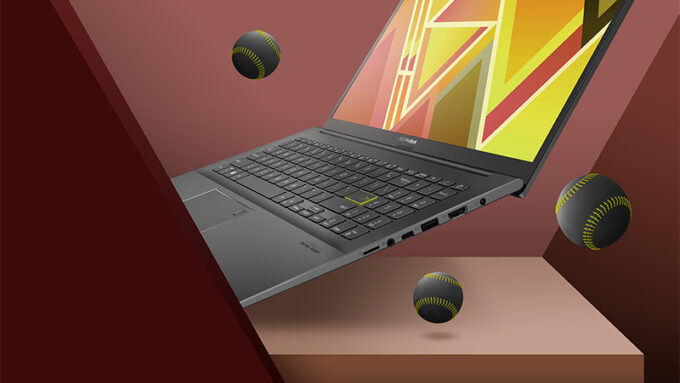 Someone had to start. The list of reasons is long, but the OLED display technology is superior to the IPS one. And We feel that the market was waiting for too long for manufacturers to start adopting it. ASUS was bold enough to put such panels inside everyday budget-conscious notebooks. This is why we have the appropriately-named VivoBook 15 OLED K513.
Someone had to start. The list of reasons is long, but the OLED display technology is superior to the IPS one. And We feel that the market was waiting for too long for manufacturers to start adopting it. ASUS was bold enough to put such panels inside everyday budget-conscious notebooks. This is why we have the appropriately-named VivoBook 15 OLED K513.
It comes with an Intel Tiger Lake-U architecture with the best specs including the Core i7-1165G7, and a GeForce MX350. As you probably know, though, you don’t need to own a beast device to be able to play light titles or go through your nonintensive workload. Actually, ULV processors are so fine nowadays, that you can definitely edit some photos without a hassle. And the OLED display should be a real treat in this case.
By the way, we have already tested the AMD version of this device (without the OLED panel), so it will be interesting to compare both products side by side.
You can check the prices and configurations in our Specs System: https://laptopmedia.com/series/asus-vivobook-15-oled-k513-m513/
Contents
Specs Sheet
- GPU
- NVIDIA GeForce MX350 #234 in Top GPUs NVIDIA GeForce MX330 (2GB GDDR5, 25W) #246 in Top GPUs Intel UHD Graphics Xe G4 (48EU) #259 in Top GPUs Intel Iris Xe Graphics G7 (96EU) #232 in Top GPUs Intel Iris Xe Graphics G7 (80EU) #240 in Top GPUs AMD Radeon RX Vega 8 (R4000/5000, 15W) #238 in Top GPUs AMD Radeon RX Vega 7 (R4000/5000, 15W) #248 in Top GPUs
- HDD/SSD
- up to 2000GB SSD + up to 1000GB HDD
- M.2 Slot
- 1x 2280 M.2 NVMe slot See photo
- RAM
- up to 40GB
- OS
- Windows 11 Home, Windows 10 Home, Windows 10 Pro
- Battery
- 42Wh, 3-cell
- Body material
- Plastic / Polycarbonate, Aluminum
- Dimensions
- 359.8 x 235.3 x 17.9 mm (14.17" x 9.26" x 0.70")
- Weight
- 1.80 kg (4 lbs)
- Ports and connectivity
- 2x USB Type-A
- 2.0
- 1x USB Type-A
- 3.2 Gen 1 (5 Gbps)
- 1x USB Type-C
- 3.2 Gen 1 (5 Gbps)
- Card reader
- MicroSD
- Ethernet LAN
- Wi-Fi
- 802.11ax
- Bluetooth
- 5.0
- Audio jack
- 3.5mm Combo Jack
- Features
- Fingerprint reader
- optional
- Web camera
- HD
- Backlit keyboard
- optional
- Microphone
- Microphone with Cortana support
- Speakers
- Speakers by Harman Kardon
- Optical drive
- Security Lock slot
All ASUS VivoBook 15 OLED (K513 / M513) configurations
What’s in the box?
Inside the package, you will find the paper manuals, some stickers, and a 65W power adapter.
Design and construction
Once again, ASUS provides its users a way to express themselves, as they offer the VivoBook 15 OLED K513 in three colors – Black, Silver, and Gold. We really like the subtlety of the black one, as it features a metal lid and plastic base cover – both with a matte finish. The body of the device weighs 1.70 kilos and has a thickness of 17.9mm, which is on point with the expectations for this class in 2021.
Unfortunately, you won’t be able to open the lid with a single hand. On the bright side, the bezels surrounding the glossy display are pretty thin, with the top one traditionally housing an HD Web camera.
Looking at the base we get the same classy vibe as the rest of the machine. However, ASUS has highlighted the Enter key with yellow trim, while the touchpad is surrounded by a sliver one – a bit weird. Nevertheless, the keyboard feels okay with average travel and clicky feedback. Moreover, it sports a NumberPad with regularly-sized keys, which is neat for people working with numbers.
Now, the touchpad is not the best out there, as the responsiveness was a bit off. On the bright side, gliding is great, and the clicking mechanism is okay.
Respectively, the bottom panel is home to the speaker cutouts, as well as the ventilation grill, which is not very big on this laptop. Heat exhaust happens from a slot in between the base and the lid.
Ports
On the left side, you get two USB Type-A 2.0 ports. Then, on the right, there is the power plug, an HDMI 1.4 connector, a USB Type-A 3.2 (Gen. 1) port, a USB Type-C 3.2 (Gen. 1) port, an audio jack, and a MicroSD card reader.
Disassembly, upgrade options and maintenance
Getting inside of this laptop is pretty easy. You just need to undo 10 Phillips head screws. Then, pry the bottom panel with a plastic tool and remove it from the chassis.
Here, we see a rather small 42Wh battery pack. Nevertheless, we got more than 9 hours of Web browsing, or about 7 hours of video playback, which is fine. The procedure of removing the battery is a bit weird, as you have to take out something that looks like a metal retention bracket. Interestingly, it acts as a structural element, supporting the chassis, and preventing flexes.
When it comes to memory, you get either 4 or 8GB soldered to the motherboard. Additionally, you can expand it to a total of 40GB via the single SODIMM slot. Storage-wise there is one M.2 PCIe x4 slot, as well as a 2.5-inch SATA slot without the connecting accessories.
The cooling solution is rather simple, with a single heat pipe, a heat sink, and a fan. Thankfully, the VRMs are also cooled by a metal plate.
Display quality
ASUS VivoBook 15 OLED K513 is equipped with an AMOLED panel, Samsung ATNA56YX03-0 (SDC4161). Its diagonal is 15.6-inch (39.62 cm), and the resolution – 1920 x 1080p. Additionally, the screen ratio is 16:9, the pixel density – 142 ppi, their pitch – 0.18 x 0.18 mm. The screen can be considered Retina when viewed from at least 60 cm (from this distance, the average human eye can’t see the individual pixels).

Viewing angles are comfortable. We offer images at different angles to evaluate the quality.

Also, a video with locked focus and exposure.
The maximum measured brightness is 390 nits (cd/m2) in the middle of the screen (HDR off). The Correlated Color Temperature on a white screen and at maximum brightness is 6400K – almost matching the 6500K temperature for sRGB.
In the illustration below you can see how the display performs from a uniformity perspective.
Values of dE2000 over 4.0 should not occur, and this parameter is one of the first you should check if you intend to use the laptop for color-sensitive work (a maximum tolerance of 2.0 ). The contrast ratio here is incomparably better than that of the IPS and TN panels and is mathematically infinite.
To make sure we are on the same page, we would like to give you a little introduction to the sRGB color gamut and the Adobe RGB. To start, there’s the CIE 1976 Uniform Chromaticity Diagram that represents the visible specter of colors by the human eye, giving you a better perception of the color gamut coverage and the color accuracy.
Inside the black triangle, you will see the standard color gamut (sRGB) that is being used by millions of people on HDTV and on the web. As for the Adobe RGB, this is used in professional cameras, monitors, etc for printing. Basically, colors inside the black triangle are used by everyone and this is the essential part of the color quality and color accuracy of a mainstream notebook.
Still, we’ve included other color spaces like the famous DCI-P3 standard used by movie studios, as well as the digital UHD Rec.2020 standard. Rec.2020, however, is still a thing of the future and it’s difficult for today’s displays to cover that well. We’ve also included the so-called Michael Pointer gamut, or Pointer’s gamut, which represents the colors that naturally occur around us every day.
The yellow dotted line shows ASUS VivoBook 15 OLED K513’s color gamut coverage.
Its display covers 100% of the sRGB/ITU-R BT.709 (web/HDTV standard) in CIE1976 and 100% of DCI-P3 providing a punchy and vibrant image.
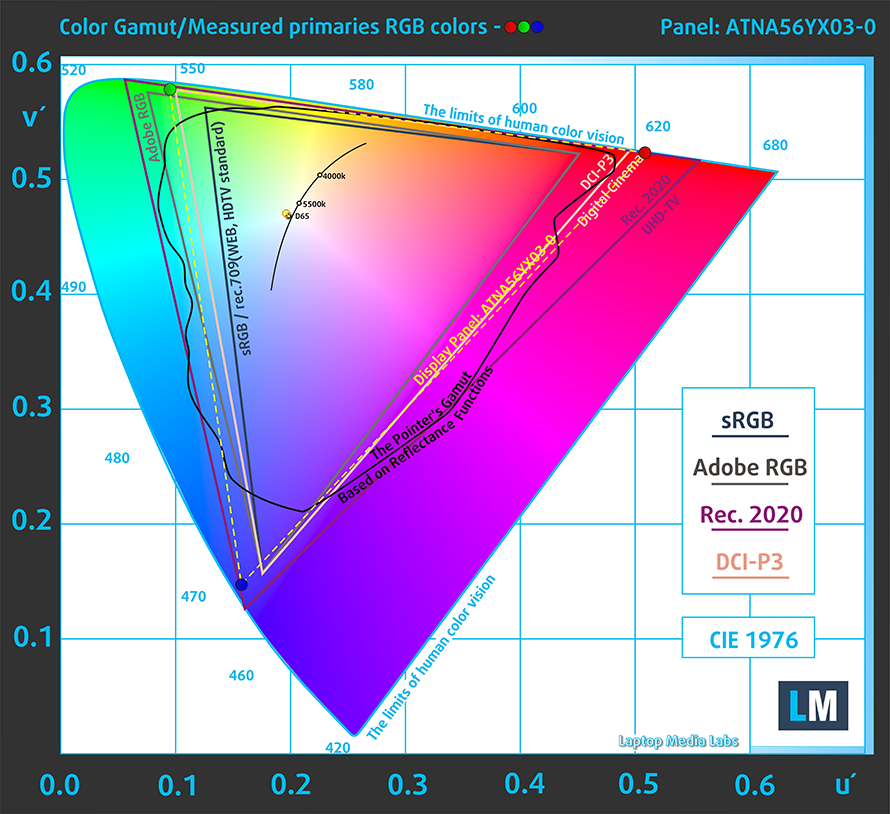
Our “Design and Gaming” profile delivers optimal color temperature (6500K) at 140 cd/m2 luminance and sRGB gamma mode.
We tested the accuracy of the display with 24 commonly used colors like light and dark human skin, blue sky, green grass, orange, etc. You can check out the results at factory condition and also, with the “Design and Gaming” profile.
Below you can compare the scores of ASUS VivoBook 15 OLED K513 with the default settings (left), and with the “Gaming and Web design” profile (right).
The next figure shows how well the display is able to reproduce really dark parts of an image, which is essential when watching movies or playing games in low ambient light.
The left side of the image represents the display with stock settings, while the right one is with the “Gaming and Web Design” profile activated. On the horizontal axis, you will find the grayscale, and on the vertical axis – the luminance of the display. On the two graphs below you can easily check for yourself how your display handles the darkest nuances but keep in mind that this also depends on the settings of your current display, the calibration, the viewing angle, and the surrounding light conditions.
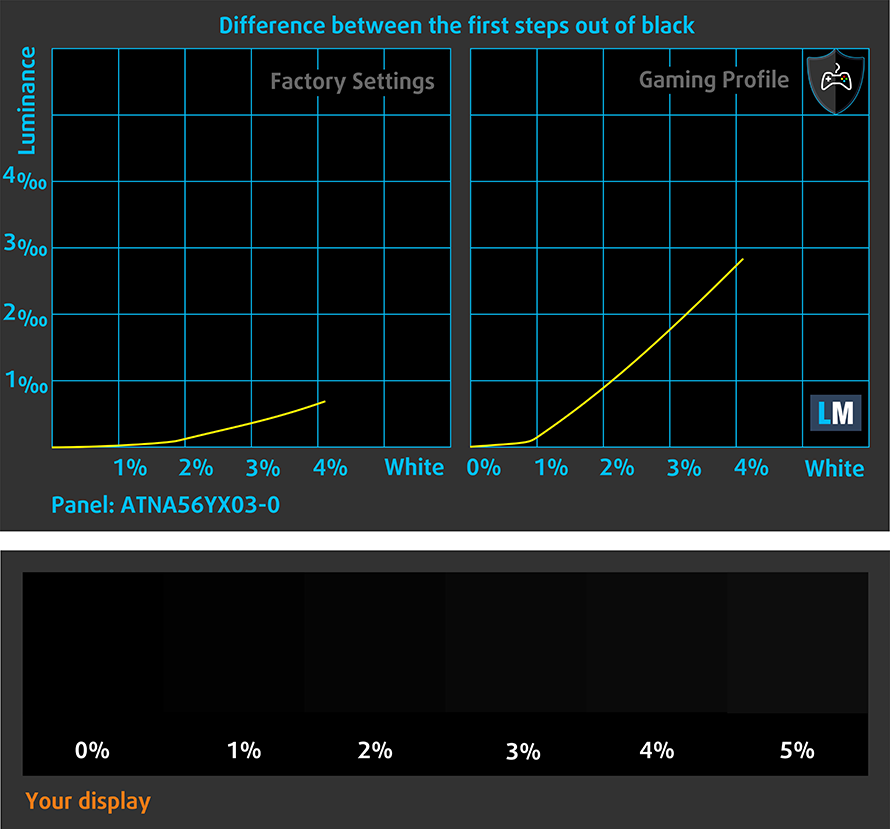
Response time (Gaming capabilities)
We test the reaction time of the pixels with the usual “black-to-white” and “white-to-black” method from 10% to 90% and vice versa.
We recorded Fall Time + Rise Time = 3 ms – insane speed.

Health impact – PWM / Blue Light
PWM (Screen flickering)
Pulse-width modulation (PWM) is an easy way to control monitor brightness. When you lower the brightness, the light intensity of the backlight is not lowered, but instead turned off and on by the electronics with a frequency indistinguishable to the human eye. In these light impulses, the light/no-light time ratio varies, while brightness remains unchanged, which is harmful to your eyes. You can read more about that in our dedicated article on PWM.
Unfortunately, ASUS VivoBook 15 OLED K513’s panel uses low-frequency PWM for brightness adjustment up until 94 nits. Afterwards, we detected small pulsations, which makes the display relatively safe in this aspect (after 95 nits).
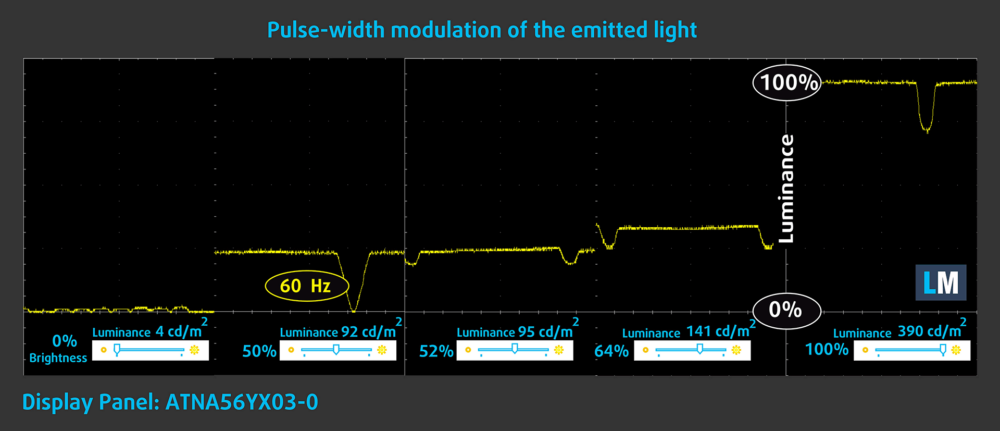
Blue light emissions
Installing our Health-Guard profile not only eliminates PWM but also reduces the harmful Blue Light emissions while keeping the colors of the screen perceptually accurate. If you’re not familiar with the Blue light, the TL;DR version is – emissions that negatively affect your eyes, skin, and your whole body. You can find more information about that in our dedicated article on Blue Light.
Buy our profiles
Since our profiles are tailored for each individual display model, this article and its respective profile package are meant for ASUS VivoBook 15 OLED K513 configurations with 15.6″ Samsung ATNA56YX03-0 (SDC4161) (1920 x 1080p) AMOLED panel.
*Should you have problems with downloading the purchased file, try using a different browser to open the link you’ll receive via e-mail. If the download target is a .php file instead of an archive, change the file extension to .zip or contact us at [email protected].
Read more about the profiles HERE.
In addition to receiving efficient and health-friendly profiles, by buying LaptopMedia's products you also support the development of our labs, where we test devices in order to produce the most objective reviews possible.

Office Work
Office Work should be used mostly by users who spend most of the time looking at pieces of text, tables or just surfing. This profile aims to deliver better distinctness and clarity by keeping a flat gamma curve (2.20), native color temperature and perceptually accurate colors.

Design and Gaming
This profile is aimed at designers who work with colors professionally, and for games and movies as well. Design and Gaming takes display panels to their limits, making them as accurate as possible in the sRGB IEC61966-2-1 standard for Web and HDTV, at white point D65.

Health-Guard
Health-Guard eliminates the harmful Pulse-Width Modulation (PWM) and reduces the negative Blue Light which affects our eyes and body. Since it’s custom tailored for every panel, it manages to keep the colors perceptually accurate. Health-Guard simulates paper so the pressure on the eyes is greatly reduced.
Get all 3 profiles with 33% discount
Sound
ASUS VivoBook 15 OLED K513’s Harman Kardon speakers are clear from deviations across the entire frequency range. Although the maximum volume is not very high, the sound has a good quality.
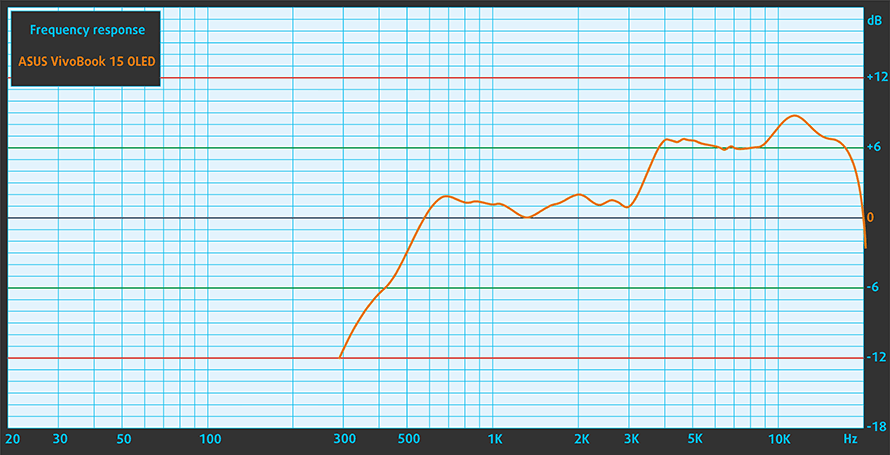
Drivers
All of the drivers and utilities for this notebook can be found here: https://www.asus.com/Laptops/For-Home/Vivobook/Vivobook-15-OLED-K513-11th-gen-intel/HelpDesk_Download/
Storage performance
The average bandwidth we got from this notebook’s Intel SSDPEKNW512G8 NVMe drive was 273 MB/s with an average access time of 118 µs, which is okay.
Battery
Now, we conduct the battery tests with Windows Better performance setting turned on, screen brightness adjusted to 120 nits, and all other programs turned off except for the one we are testing the notebook with. This laptop’s 42Wh battery pack lasts for 9 hours and 16 minutes of Web browsing, or 6 hours and 57 minutes of video playback.
In order to simulate real-life conditions, we used our own script for automatic web browsing through over 70 websites.
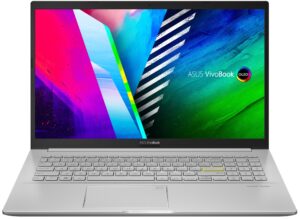

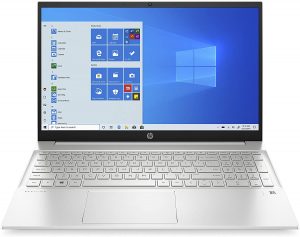
For every test like this, we use the same video in HD.



CPU options
The K version of this laptop comes with four processor options. This includes the Core i3-1115G4, Core i3-1125G4, Core i5-1135G7, and Core i7-1165G7.
Results are from the Cinebench R23 CPU test (the higher the score, the better)
Results are from our Photoshop benchmark test (the lower the score, the better)
ASUS VivoBook 15 OLED (K513 / M513) CPU variants
Here you can see an approximate comparison between the CPUs that can be found in the ASUS VivoBook 15 OLED (K513 / M513) models on the market. This way you can decide for yourself which ASUS VivoBook 15 OLED (K513 / M513) model is the best bang for your buck.
Note: The chart shows the cheapest different CPU configurations so you should check what the other specifications of these laptops are by clicking on the laptop’s name / CPU.
Results are from the Cinebench R23 CPU test (the higher the score, the better)
Results are from our Photoshop benchmark test (the lower the score, the better)
GPU options
As for the graphics, you get the Intel UHD Graphics, Iris Xe Graphics G7 (80EU) and (96EU), and the dedicated GeForce MX330, or MX350.
Results are from the 3DMark: Time Spy (Graphics) benchmark (higher the score, the better)
Results are from the 3DMark: Fire Strike (Graphics) benchmark (higher the score, the better)
Results are from the 3DMark: Wild Life benchmark (higher the score, the better)
Results are from the Unigine Superposition benchmark (higher the score, the better)
ASUS VivoBook 15 OLED (K513 / M513) GPU variants
Here you can see an approximate comparison between the GPUs that can be found in the ASUS VivoBook 15 OLED (K513 / M513) models on the market. This way you can decide for yourself which ASUS VivoBook 15 OLED (K513 / M513) model is the best bang for your buck.
Note: The chart shows the cheapest different GPU configurations so you should check what the other specifications of these laptops are by clicking on the laptop’s name / GPU.
Results are from the 3DMark: Time Spy (Graphics) benchmark (higher the score, the better)
Results are from the 3DMark: Fire Strike (Graphics) benchmark (higher the score, the better)
Results are from the 3DMark: Wild Life (Graphics) benchmark (higher the score, the better)
Results are from the Unigine Superposition benchmark (higher the score, the better)
Gaming tests

| CS:GO | HD 1080p, Low (Check settings) | HD 1080p, Medium (Check settings) | HD 1080p, MAX (Check settings) |
|---|---|---|---|
| Average FPS | 103 fps | 76 fps | 35 fps |

| DOTA 2 | HD 1080p, Low (Check settings) | HD 1080p, Normal (Check settings) | HD 1080p, High (Check settings) |
|---|---|---|---|
| Average FPS | 114 fps | 71 fps | 42 fps |
Temperatures and comfort
Max CPU load
In this test we use 100% on the CPU cores, monitoring their frequencies and chip temperature. The first column shows a computer’s reaction to a short load (2-10 seconds), the second column simulates a serious task (between 15 and 30 seconds), and the third column is a good indicator of how good the laptop is for long loads such as video rendering.
Average core frequency (base frequency + X); CPU temp.
| Intel Core i5-1135G7 (15W TDP) | 0:02 – 0:10 sec | 0:15 – 0:30 sec | 10:00 – 15:00 min |
|---|---|---|---|
| ASUS VivoBook 15 OLED K513 | 3.39 GHz (B+41%) @ 83°C @ 40W | 3.28 GHz (B+34%) @ 91°C @ 37W | 2.96 GHz (B+23%) @ 85°C @ 28W |
| HP Pavilion x360 15 (15-er0000) | 2.97 GHz (B+24%) @ 75°C @ 35W | 2.39 GHz @ 78°C @ 21W | 2.35 GHz @ 77°C @ 20W |
| MSI Summit E13 Flip Evo | 3.65 GHz (B+52%) @ 96°C @ 45W | 3.31 GHz (B+38%) @ 96°C @ 47W | 3.03 GHz (B+25%) @ 96°C @ 29W |
| Dell XPS 13 9310 (2-in-1) | 3.36 GHz (B+40%) @ 99°C @ 41W | 3.16 GHz (B+32%) @ 99°C @ 37W | 1.92 GHz @ 72°C @ 16W |
| Dell XPS 13 9310 | 3.15 GHz (B+31%) @ 100°C @ 40W | 2.73 GHz (B+14%) @ 100°C @ 30W | 1.65 GHz @ 73°C @ 15W |
| Dell Vostro 15 5502 | 3.33 GHz (B+39%) @ 100°C @ 38W | 1.96 GHz @ 72°C @ 14W | 2.02 GHz @ 74°C @ 15W |
| Dell Vostro 14 5402 | 3.02 GHz (B+26%) @ 99°C @ 29W | 2.61 GHz (B+9%) @ 99°C @ 25W | 2.00 GHz @ 76°C @ 15W |
| MSI Modern 15 (A11X) | 3.59 GHz (B+50%) @ 94°C @ 44W | 3.45 GHz (B+44%) @ 95°C @ 40W | 3.18 GHz (B+33%) @ 91°C @ 34W |
| Lenovo ThinkBook 14s Yoga | 3.52 GHz (B+47%) @ 94°C | 3.24 GHz (B+35%) @ 94°C | 2.63 GHz (B+10%) @ 75°C |
| Lenovo Yoga 7 (14) | 3.34 GHz (B+39%) @ 94°C | 2.97 GHz (B+24%) @ 94°C | 2.39 GHz @ 75°C |
| Acer Aspire 5 (A514-54) | 3.54 GHz (B+48%) @ 87°C | 2.01 GHz @ 66°C | 2.03 GHz @ 67°C |
For this test, we used the Performance preset from the software provided by ASUS. It allows the processor to maintain a long-term TDP limit of 28W, which in turn results in about 3.00 GHz at the end of the test. This is a very good result. The temperature, however, was a bit warm at 85°C.
Comfort during full load
Indeed, the warmth could be felt through the keyboard. Thankfully, it is isolated to the right side of the board – around the NumPad area. Noise-wise, we had a relatively quiet experience.
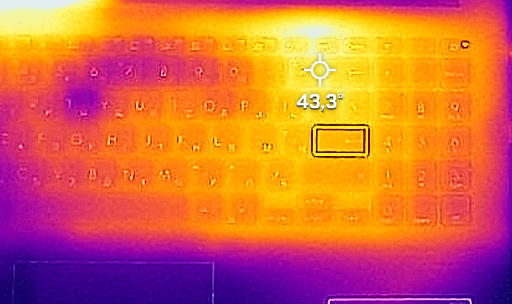
Verdict
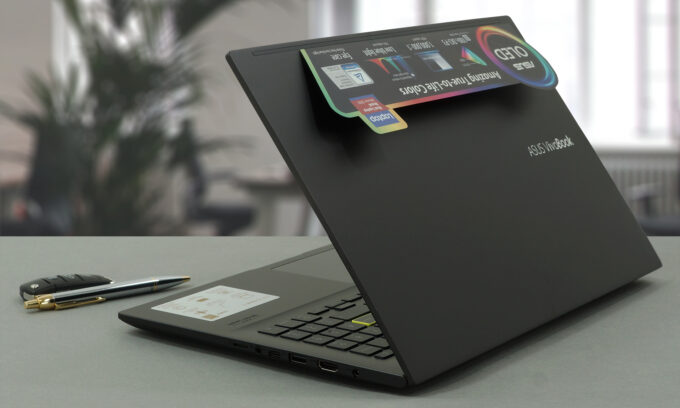 To be honest, we were a bit surprised by the performance output of this machine. Ultimately, it is pretty good for photo editing and even some 1080p video edits. Playing light titles like the CS:GO won’t be an issue either. You just have to make sure you use the dual-channel capability of the device. In fact, this is exactly what we did. Now, it’s a bit unfortunate that there is only one SODIMM slot, as either 4 or 8GB are soldered to the motherboard. Additionally, you get two slots for storage expansion – one M.2 and one 2.5-inch SATA, but there are no accessories for the latter.
To be honest, we were a bit surprised by the performance output of this machine. Ultimately, it is pretty good for photo editing and even some 1080p video edits. Playing light titles like the CS:GO won’t be an issue either. You just have to make sure you use the dual-channel capability of the device. In fact, this is exactly what we did. Now, it’s a bit unfortunate that there is only one SODIMM slot, as either 4 or 8GB are soldered to the motherboard. Additionally, you get two slots for storage expansion – one M.2 and one 2.5-inch SATA, but there are no accessories for the latter.
Nevertheless, it is good to see that the rather small 42Wh battery lasts for more than 9 hours of Web browsing, or nearly 7 hours of video playback. Also, the I/O is pretty wide, but we have to mention that we are not impressed by the fact that two of the USB Type-A ports are only 2.0.
ASUS VivoBook 15 OLED K513’s panel (Samsung ATNA56YX03-0 (SDC4161)) has a Full HD resolution, reasonably high maximum brightness, comfortable viewing angles, and quick pixel response times. It covers 100% of the sRGB and DCI-P3 color gamuts, which results in a saturated and punchy image. Unfortunately, it uses PWM for brightness adjustment up to 94 nits, after which we detected some mild pulsations. On the bright side, the display is compliant with the HDR 600 standard, which is great.
Without a doubt, the display is this laptop’s highlight. ASUS states that their unit has up to 70% less blue light emissions. As we said at the beginning of this review, equipping affordable laptops with OLED panels was long overdue, and we are happy that ASUS is making the effort to fix this mistake of the entire industry.
Looking at the future, we see higher resolution panels, with faster refresh rates, no PWM usage, and better color accuracy. Indeed, there is a lot of work to be done, but now that the hardware is here, and more importantly – is getting mass-produced, upgrades should come faster.
Indeed, the VivoBook 15 OLED K513 is not the perfect laptop, but we think that it utilizes its hardware perfectly, and offers its users a good run for their money.
You can check the prices and configurations in our Specs System: https://laptopmedia.com/series/asus-vivobook-15-oled-k513-m513/
Pros
- Adequate pricing
- Reasonably comfortable keyboard with optional backlight
- 100% sRGB and DCI-P3 coverage (Samsung ATNA56YX03-0 (SDC4161))
- HDR 600 support and infinite contrast ratio (Samsung ATNA56YX03-0 (SDC4161))
- Expandable memory + M.2 NVMe and 2.5-inch SATA drive slots
- MicroSD card slot
- Optional Wi-Fi 6 and fingerprint reader
- Extracts the best out of the hardware
Cons
- PWM usage (Samsung ATNA56YX03-0 (SDC4161))
- Two of its three USB Type-A ports are of 2.0 speeds
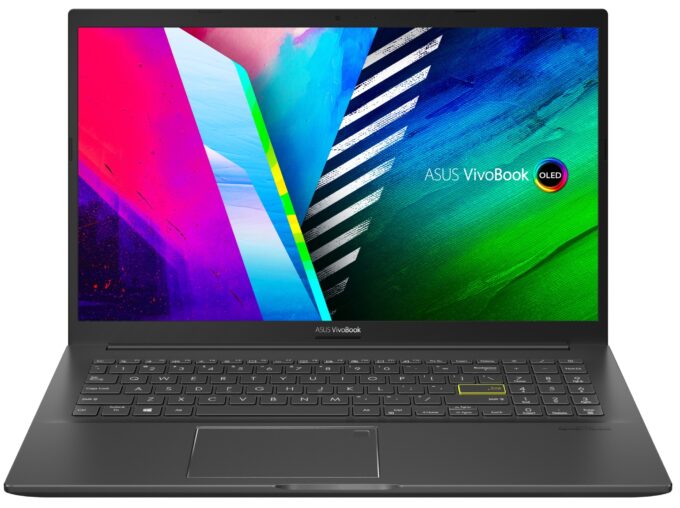



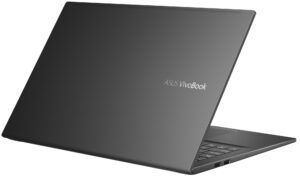
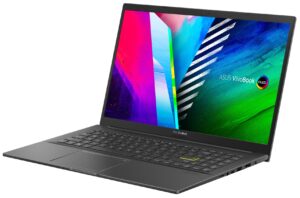

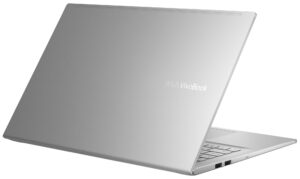

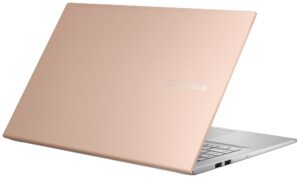
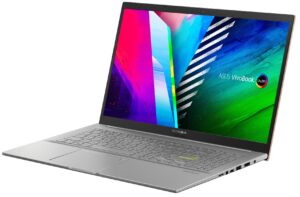
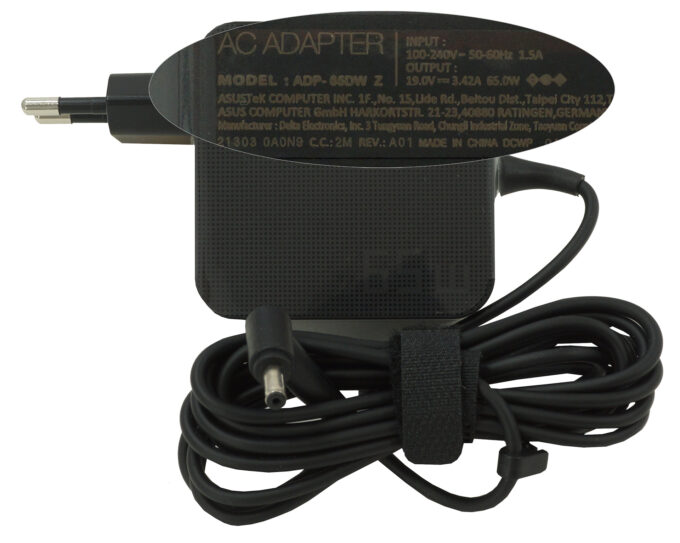
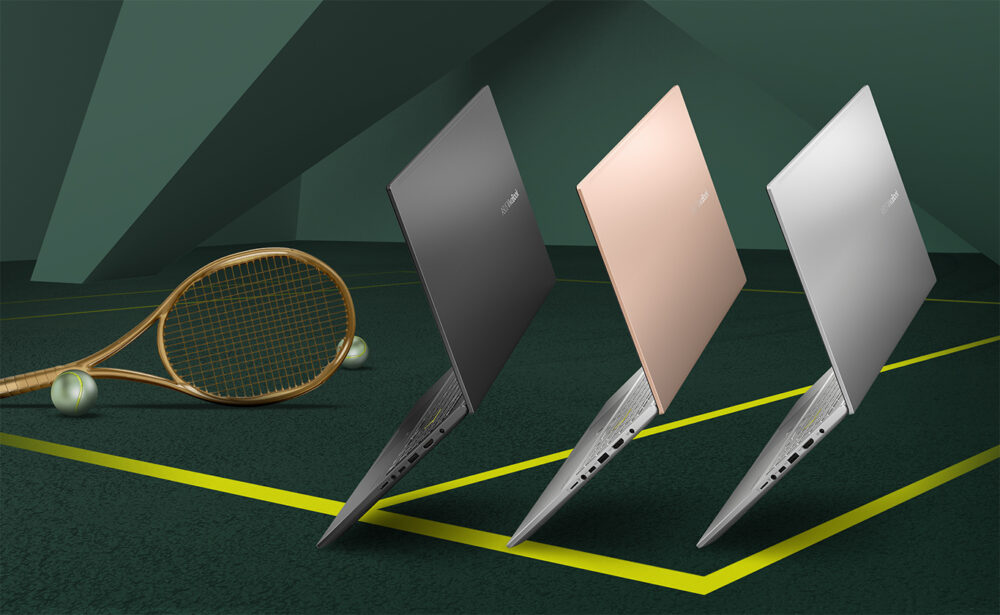
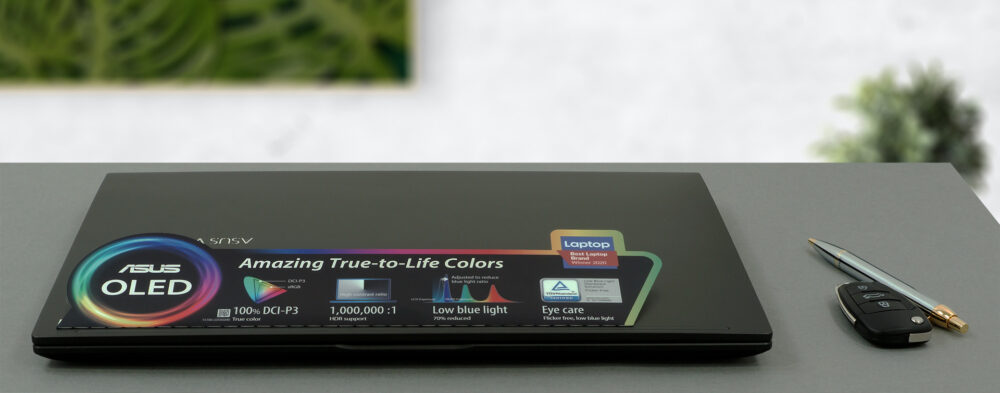
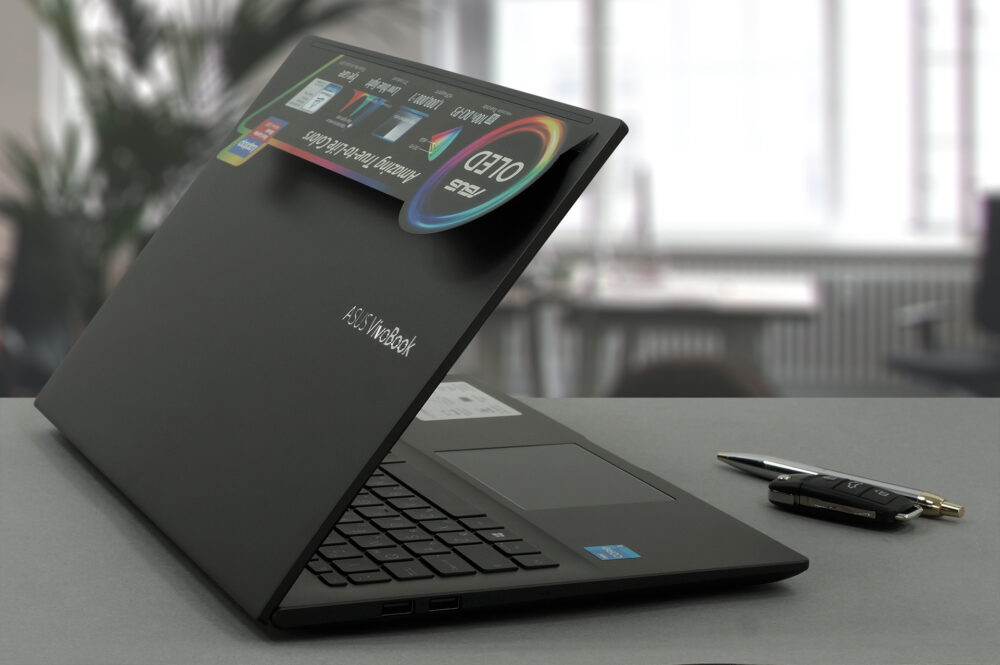
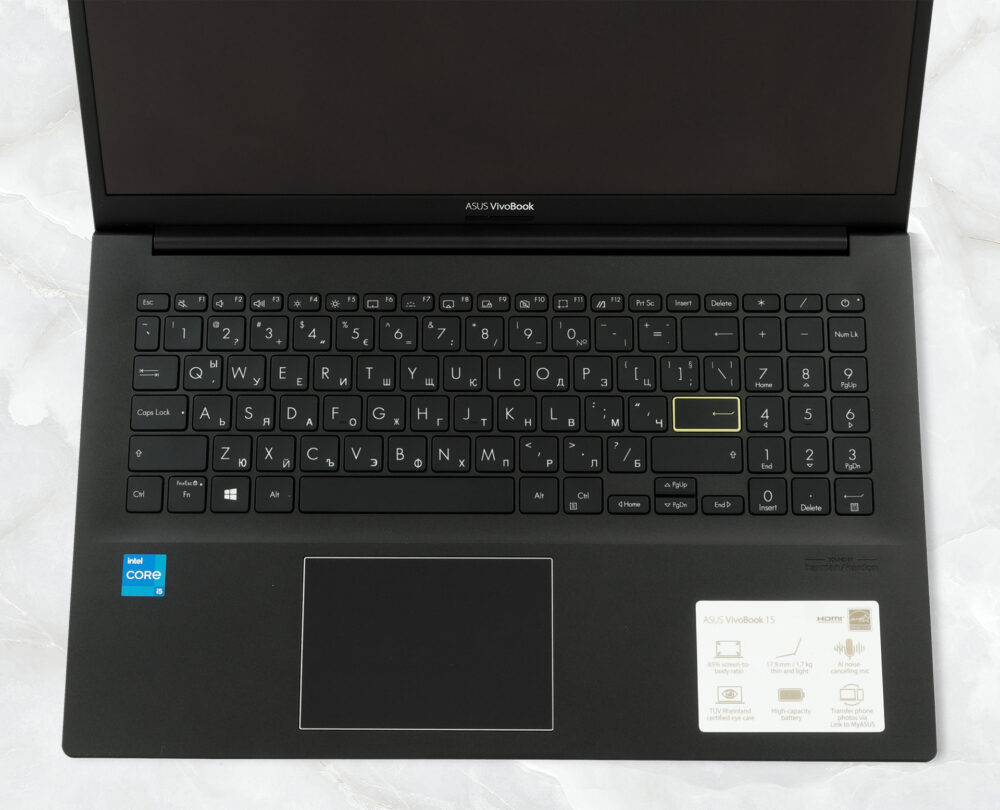
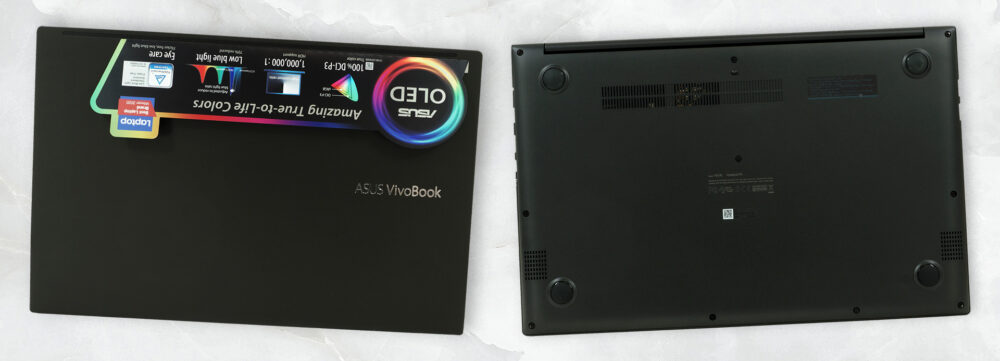


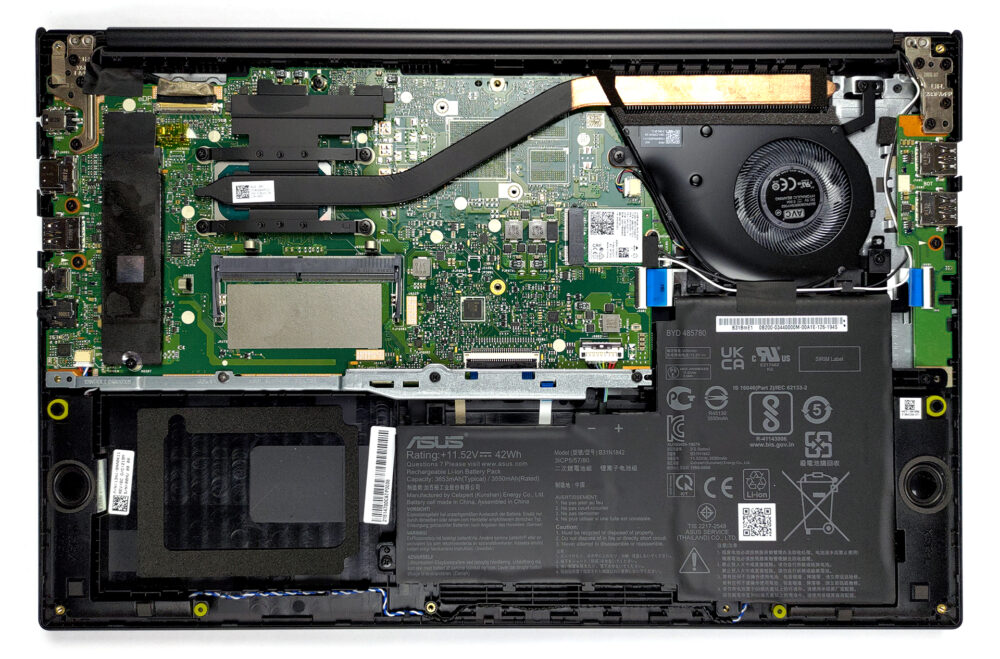
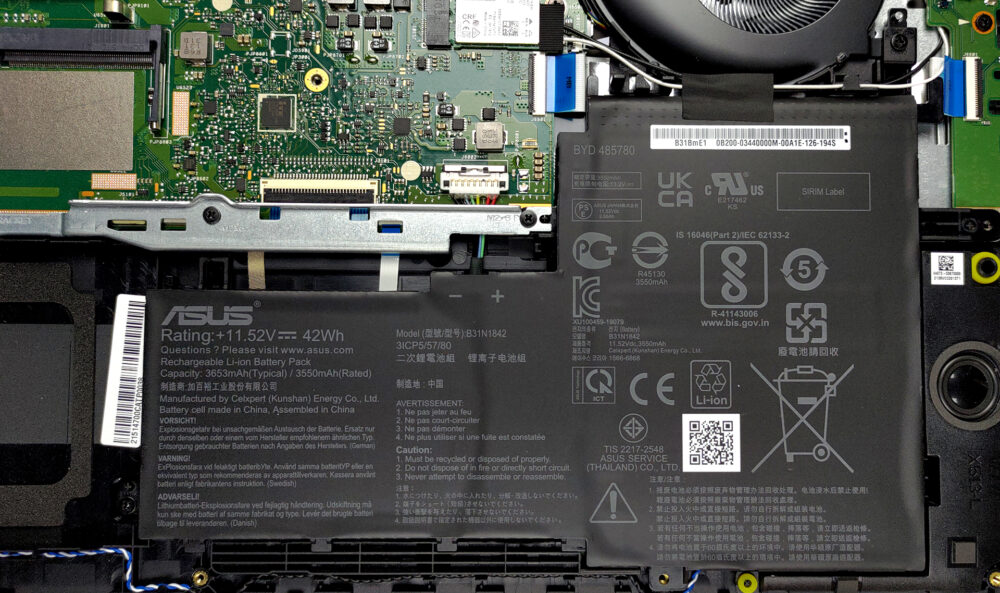
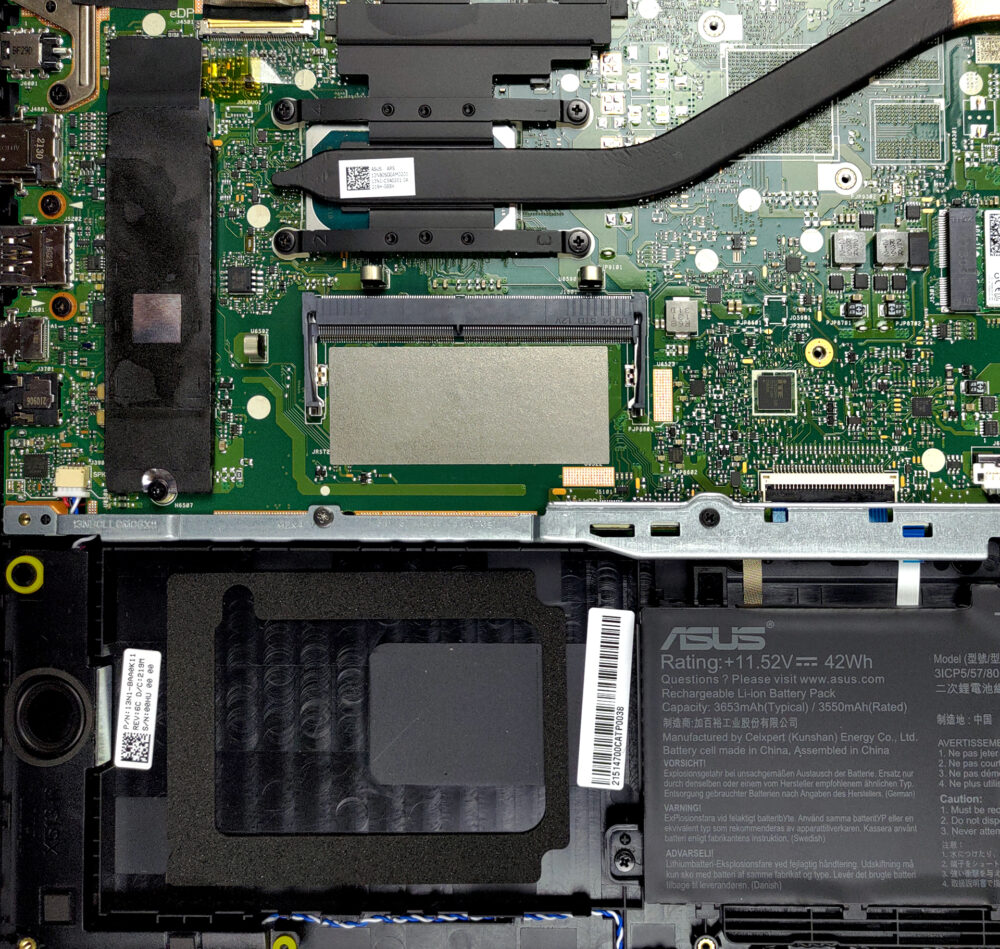
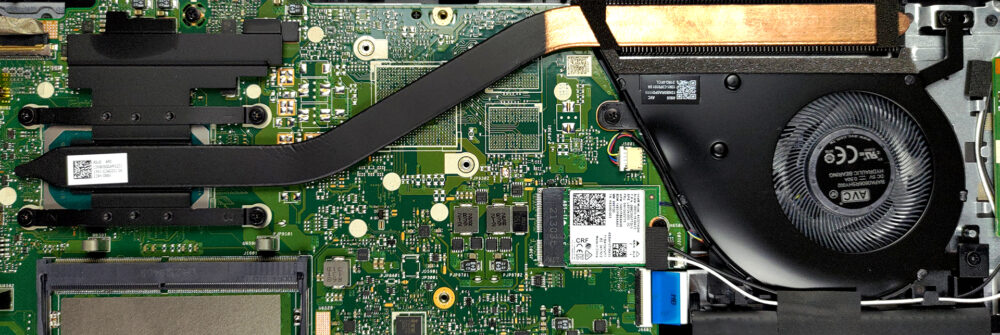

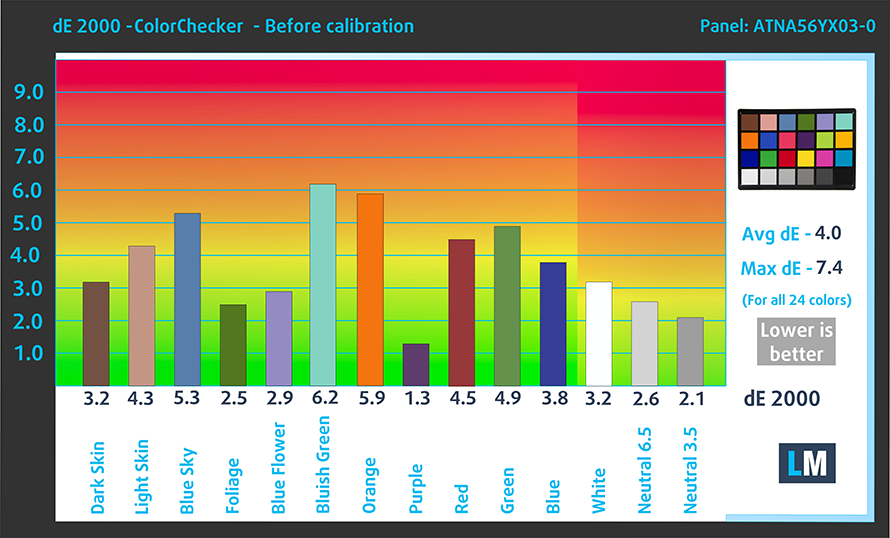


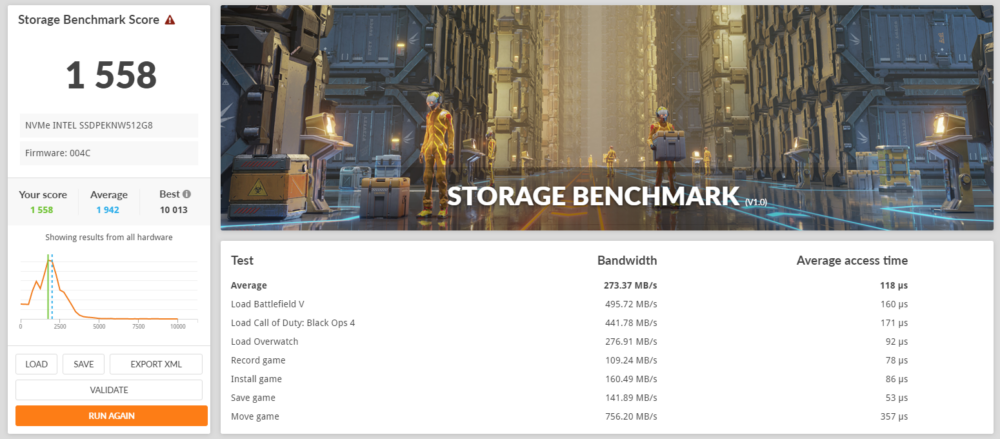
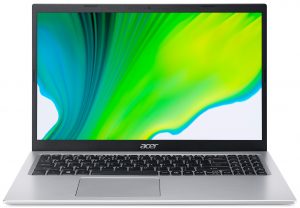
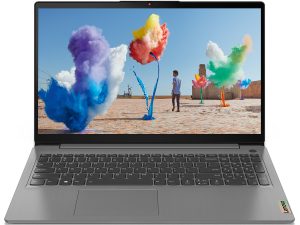
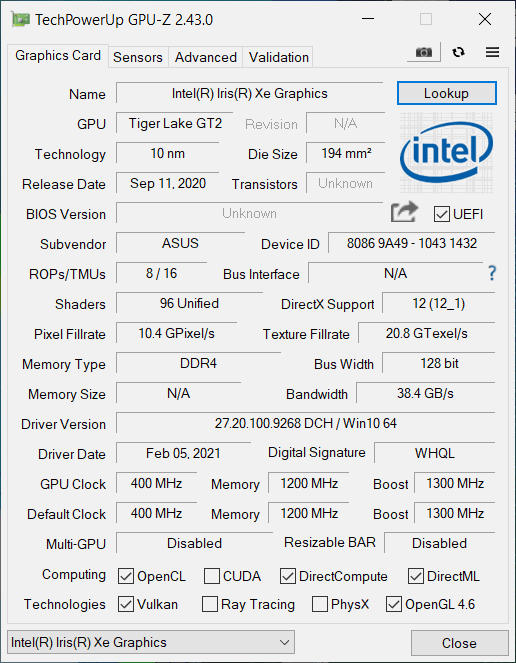







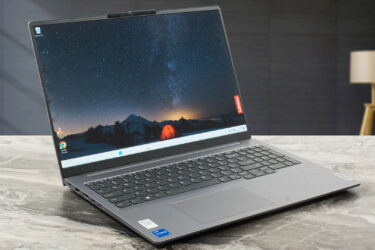
Hola tengo este modelo y queria saver que tipo de targeta micro sd comprar y cuanta capacidad maxima tiene que tener, gracias un saludo.